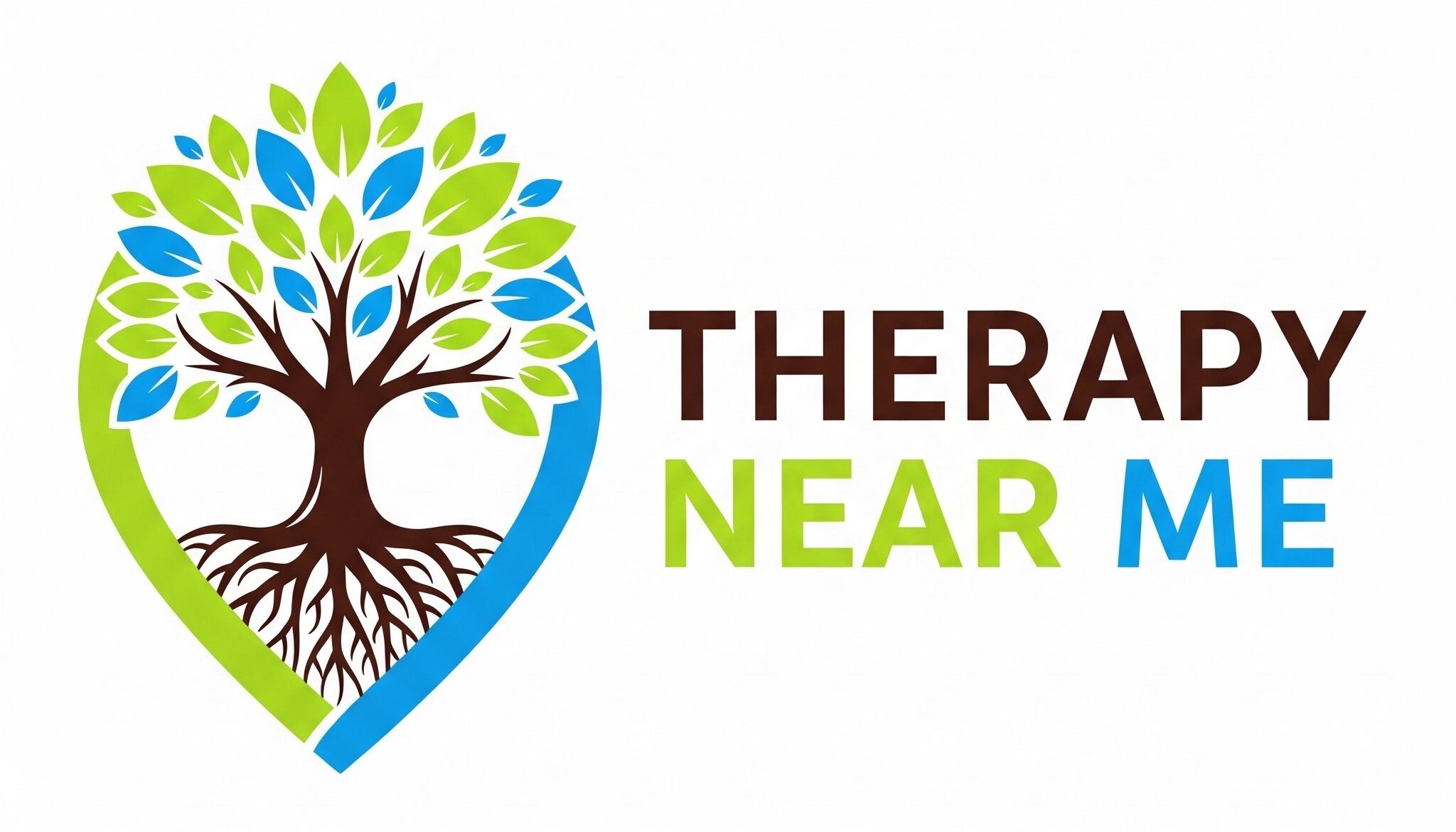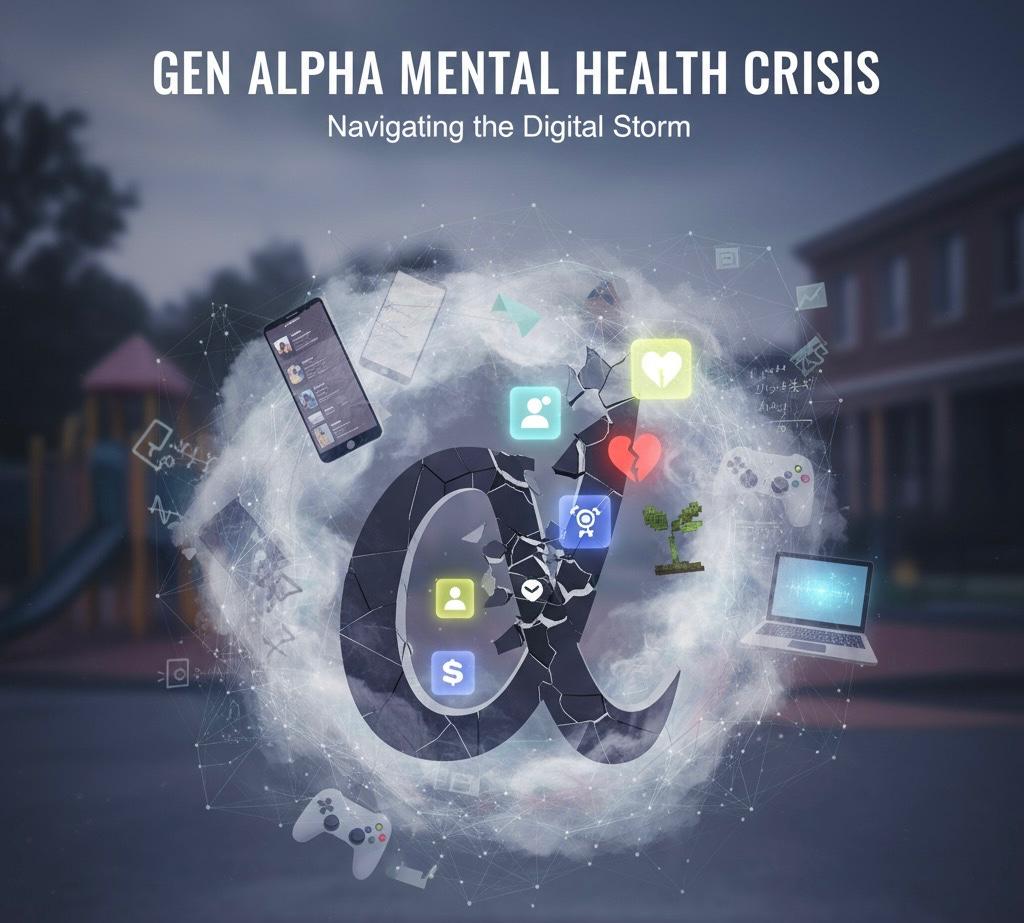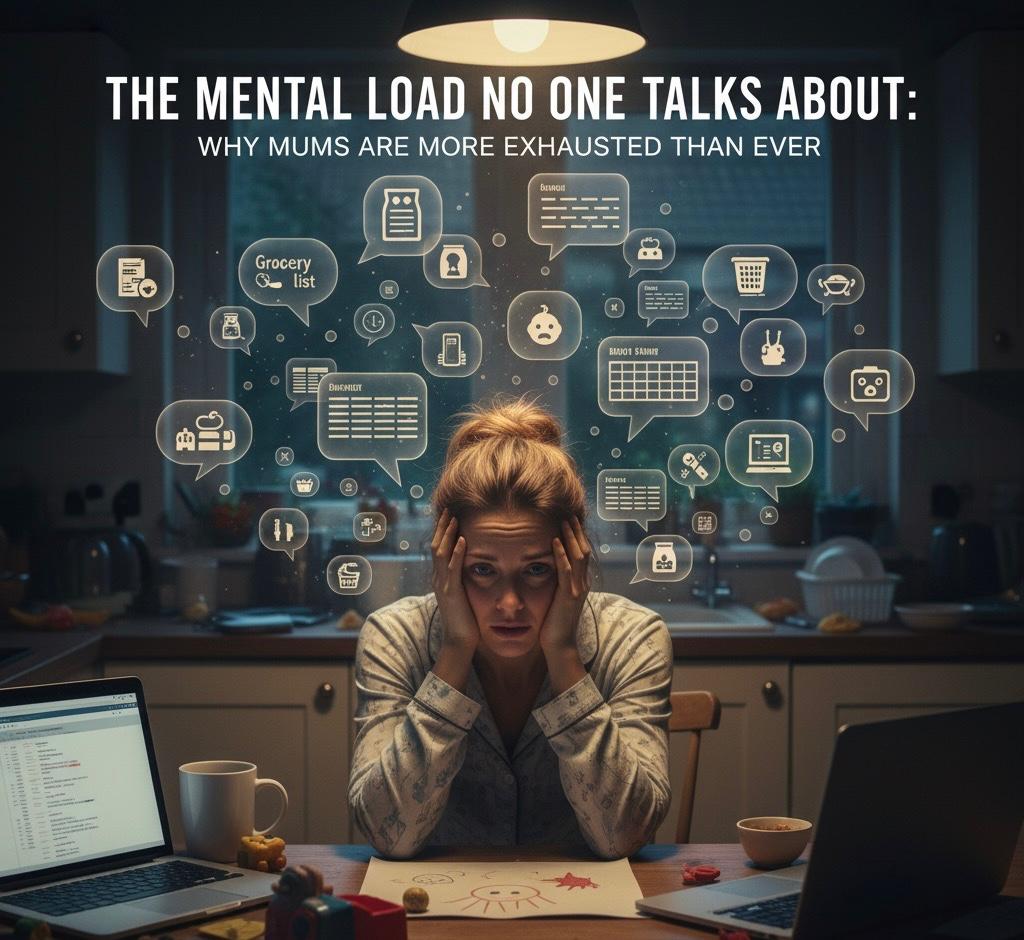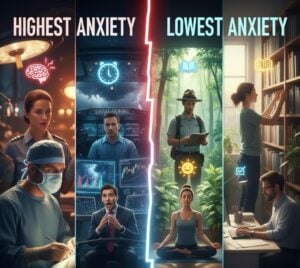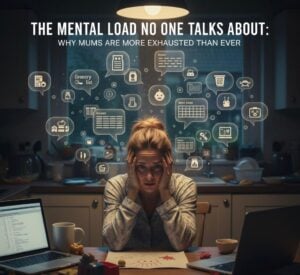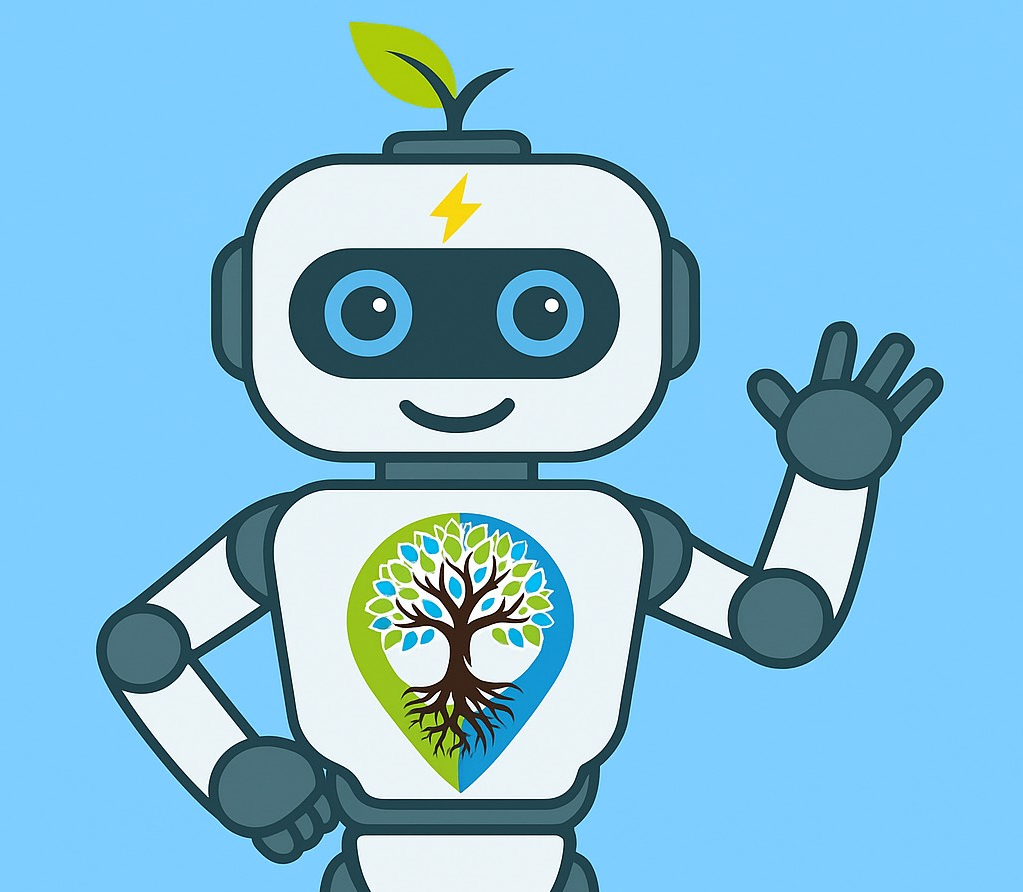Introduction
Not all careers impact mental health equally. Some professions carry high levels of sustained psychological stress, decision pressure, emotional labour, and exposure to trauma — all of which drive anxiety risk. Others offer predictable routines, high autonomy, and low emotional burden, making them statistically protective against anxiety and burnout.
This extended article explores the highest and lowest anxiety professions in 2025, using data from peer‑reviewed psychology research, labour studies, and global occupational health reports. We break down why certain careers produce more anxiety than others, what personality types are more vulnerable, and how professionals can protect their mental wellbeing.
What Determines Anxiety Risk in a Profession?
Occupational psychologists identify four major predictors of anxiety in the workplace (Karasek & Theorell, 1990):
- High emotional exposure – dealing with trauma, death, confrontation, human distress.
- Low control, high responsibility – high stakes, but limited autonomy or flexibility.
- Sensory overload and constant interruptions – typical in healthcare, emergency services, hospitality.
- Job insecurity or unrealistic deadlines – common in corporate, sales and startup environments.
In contrast, professions with autonomy, stable routine, deep work focus, and low exposure to suffering or conflictshow significantly lower anxiety and burnout rates.
Professions with the Highest Anxiety Levels (Research‑based)
1. Emergency and frontline healthcare workers
Doctors, paramedics, nurses and mental health clinicians experience constant exposure to crisis, death, trauma, and rapid decision‑making under pressure (Shanafelt et al., 2021). Burnout rates in emergency medicine exceed 60% globally.
2. Teachers and early childhood educators
High emotional labour, dysregulated classrooms, and pressure to meet academic/government benchmarks have made teaching one of the fastest‑burning out professions in Australia (Deloitte, 2023).
3. Lawyers and corporate finance professionals
Perfectionism culture, long hours, high stakes, and adversarial environments are strongly linked with anxiety, insomnia and substance use (Krakauer et al., 2020). Mental health stigma remains high in law.
4. Customer service and call centre workers
Evidence shows unpredictable conflict, emotional abuse from customers, and surveillance-based micromanagement create extreme anxiety over time (Zapf et al., 2003).
5. Gig economy and freelance workers
High income instability, no benefits, algorithmic rating systems, and lack of boundaries contribute to chronic stress and emotional exhaustion (Wood et al., 2019).
Professions with the Lowest Anxiety Levels
1. Archivists, librarians and research professionals
Structured routine, quiet environments and high autonomy and cognitive focus make this one of the lowest burnout and anxiety professions (Bhui et al., 2016).
2. Skilled trades (electricians, carpenters, mechanics)
High task clarity, real‑world problem solving and visible outcomes are protective against cognitive rumination, reducing anxiety risk.
3. Data analysts and software engineers (in stable environments)
Deep work, remote flexibility and high autonomy significantly lower anxiety — unless placed in toxic startup “crunch” cultures.
4. Park rangers, conservation workers and ecotherapists
Regular nature exposure reduces cortisol and anxiety symptoms (Bratman et al., 2019). Seen as one of the most psychologically regenerative career types.
5. University lecturers with tenure
High autonomy, long‑term academic security and seasonal work rhythm create statistically lower anxiety levels than most professions (Winefield et al., 2003).
Why Personality Fit Matters More Than the Job Title
Some people thrive in high‑pressure roles (e.g. emergency doctors), while others experience anxiety rapidly in chaotic or unpredictable workplaces.
The biggest predictor of long‑term mental health is whether the role aligns with a person’s:
- Need for autonomy vs structure
- Extroversion vs introversion
- Stimulation vs calm environments
- Empathy levels — high empathy increases burnout in trauma‑exposed fields
A “low anxiety job” for one person may be mentally corrosive to another.
Conclusion
Anxiety risk is not random — it is predictably linked to exposure to human suffering, loss of control, high responsibility without support, and emotional conflict. Professions in healthcare, law, frontline education and customer conflict carry the greatest psychological load, while autonomy‑rich, quieter, and nature‑exposed rolesshow the lowest anxiety levels.
Choosing a career aligned with both personal nervous system tolerance and environmental preference is one of the strongest long‑term mental health protective decisions a person can make.
References
- Bhui, K., et al. (2016) ‘Mental health in the workplace’, Occupational Medicine, 66(8), pp. 642–649.
- Bratman, G.N., et al. (2019) ‘Nature contact and mental health’, Science Advances, 5(7).
- Deloitte (2023) Teacher Workforce Sustainability Report. Deloitte Australia.
- Karasek, R. & Theorell, T. (1990) Healthy Work: Stress, Productivity, and the Reconstruction of Working Life. New York: Basic Books.
- Krakauer, R., et al. (2020) ‘Mental Health in the Legal Profession’, Journal of Law and Health, 34(2).
- Shanafelt, T., et al. (2021) ‘Physician burnout and healthcare outcomes’, Mayo Clinic Proceedings, 96(2), pp. 489–501.
- Winefield, A.H., et al. (2003) ‘Occupational stress in Australian university staff’, International Journal of Stress Management, 10(4).
- Wood, A.J., Graham, M., Lehdonvirta, V. & Hjorth, I. (2019) ‘Good gig, bad gig’, Work, Employment & Society, 33(1).
- Zapf, D., Vogt, C., Seifert, C., et al. (2003) ‘Emotion work as a source of stress’, Anxiety, Stress & Coping, 16(4), pp. 371–387.
